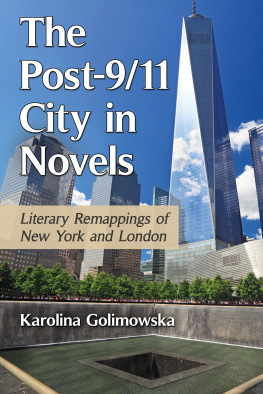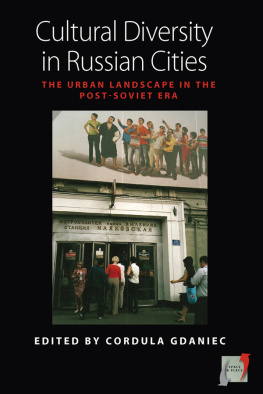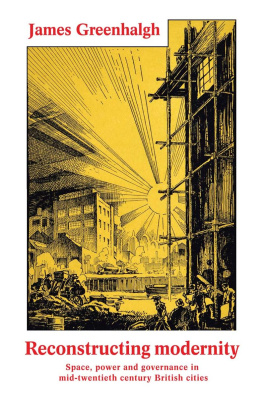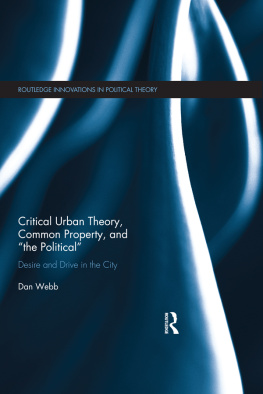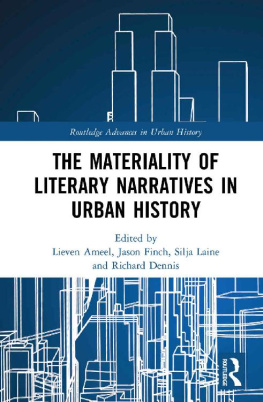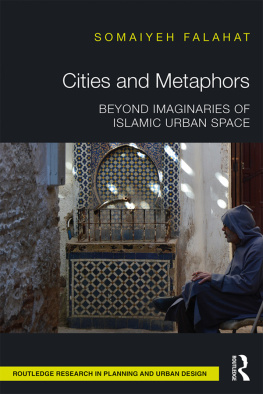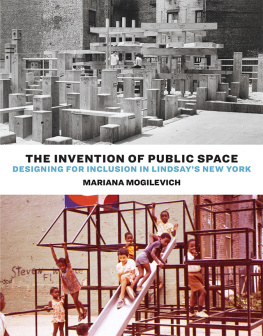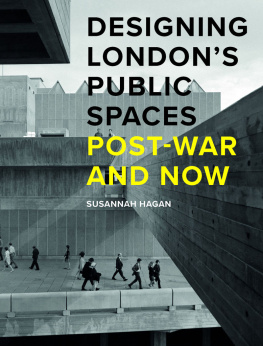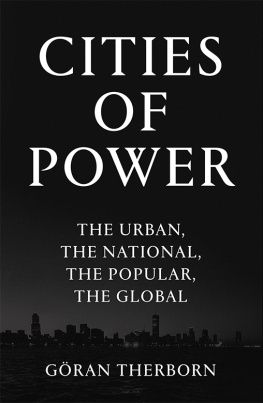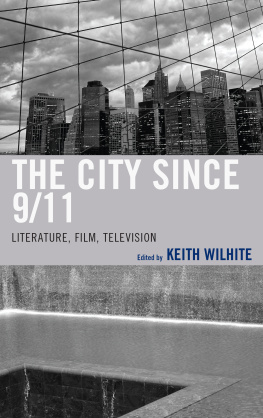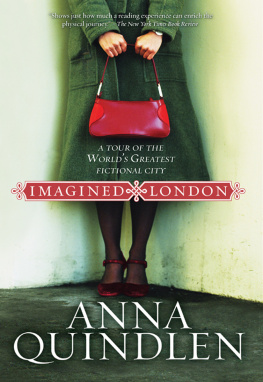
The Post9/11 City in Novels
Literary Remappings of New York and London
Karolina Golimowska

McFarland & Company, Inc., Publishers
Jefferson, North Carolina
LIBRARY OF CONGRESS CATALOGUING DATA ARE AVAILABLE
BRITISH LIBRARY CATALOGUING DATA ARE AVAILABLE
e-ISBN: 978-1-4766-2454-9
2016 Karolina Golimowska. All rights reserved
No part of this book may be reproduced or transmitted in any form or by any means, electronic or mechanical, including photocopying or recording, or by any information storage and retrieval system, without permission in writing from the publisher.
Front cover photograph of One World Trade Center and memorial fountain, New York City 2016 Vladone/iStock
McFarland & Company, Inc., Publishers
Box 611, Jefferson, North Carolina 28640
www.mcfarlandpub.com
Acknowledgments
I would like to thank the Department of English and American Studies at Humboldt-Universitt zu Berlin, the Department of Social and Cultural Analysis at New York University and the English Department at the University of Richmond, Virginia, for their institutional support. My thanks go to the Konrad-Adenauer Foundation for supporting my PhD research that this book derives from. I would also like to thank the Caroline von Humboldt Program of the Excellence Initiative of the German Federal Ministry of Education and Research for the International Research Award I received in 2014. I am also indebted to The Journal of American Culture for its permission to reprint part of an article on Joseph ONeills Netherland.
I would like to thank several scholars who have inspired me during my work on this book and took their time to discuss it with me at its different stages: Bertram Ashe, Eva Boesenberg, Antje Dallmann, Reinhard Isensee, Kathy Merlock Jackson, Martin Klepper, Sukhdev Sandhu and Monika Siebert.
My thanks go also to Alexander Gumz, Elizabeth Maneli and Melvin Singer for their kind help and support in collecting documents and compiling the bibliography. Finally, I would like to thank my parents for their continuous and unconditional support of all my ideas and moves related to this project.
Preface
When I think of 2001, I recall a hot summer in Canada and a mild concern about the first few months of George W. Bushs presidency that sometimes came up in after-dinner discussions at the peaceful lake house north of Algon-quin Park where I was spending my vacation visiting family.
A few weeks later in Warsaw, on my way to school on September 12, getting on the subway in the early morning I bought Gazeta Wyborcza, a daily newspaper. On the front page black letters announced A War with the U.S. beneath a photo of the north tower of the World Trade Center collapsing. For some reason I recall seeing the front page as an experience as frightening as joining my father in front of the TV a day earlier and watching my mother keep trying to reach her friend in Queens. Eventually the friend returned her call.
The next months and years were marked in Europe by an internal political conflict regarding the issue of supporting the U.S. in the Iraq war and in what came to be known as the war on terror. Polands president at that time, Aleksander Kwaniewski, declared its full support for the countrys beloved big sister, America, the attacked paradise and home to many Polish immigrants. Polish troops were sent to Iraqin Europe this action has been highly criticized and was seen as a symbolic statement not only for the U.S. but also against France and Germany. Many Poles became concerned about their safety and the safety of their relativesa concern that grew rapidly after the 7/7 attacks in London, the capital of the United States main European ally in the war on terror. This concern was particularly shared by people living in cities, especially in the capital Warsaw, where I grew up.
In the summer semester of 2005, immediately after the 7/7 attacks, I started studying English literature in London. Riding the subway, I saw London Stands United posters everywhere and inhaled the fear floating in the air.
I lived in the east, in Tower Hamlets, a borough with the largest Muslim population in the city. I was surrounded by women with covered faces and by restaurants serving Bangladeshi curries. In one of my seminars at UCL I read Monica Alis Brick Lane, named after a street in my east London neighborhood where I bought bagels and met friends on weekends. The life of the protagonists of that novel changes drastically after 9/11; it becomes covered with what Ali calls New York dust. I decided to write my MA thesis on post-colonial London and began to search for other novels that addressed the September 11 attacks. My interest in the subject derives from outside of the U.S. It begins with looking at the U.S. from abroad, from other places covered with the dust that was blown over the Atlantic.
Later, when working on my PhD, New York revealed itself gradually to me through the novels I read. When I moved to New York, I explored the city by following their paths, always on foot, often until exhausted. I felt close to the characters and also felt their city was slowly becoming my city as well.
Quite early in my research it became apparent that fiction reacting to September 11 can be seen as a key to understanding social processes in metropolitan settings. It provides unique possibilities of approaching and addressing cities and generates knowledge about life in the metropolis. It became the main focus of my studies and a lens through which I consider the fiction in this book.
When teaching post9/11 literature to undergraduates it is clear to me that the attacks are becoming more and more remote in the collective memory. Already it is often the case that the young people in my classes have no memories of that day at all. This requires a new approach toward the literature in question but also a new way of seeing New York. When looking at the city from above, standing in the observatory on the top floor of One World Trade Center, it strikes me how unreal and remote the city becomes. Through windows marked by the fingerprints of thousands of people taking photos, one can see the 9/11 memorial marking the feet of the absent Twin Towers. This whole area in Lower Manhattan has redefined itself and is now a new place. The new World Trade Center with its Freedom Tower offers new views over the city, new perspectives which accommodate the new approach of my young students and the next generations. The slogan used to advertise the observatory, See forever, where forever is a registered trademark, is to me a clear proclamation of eternity, indestructability and power. It shouts its message to the world: The world saw it rise. The world saw it take shape. Now the world can see forever. I am waiting for literary characters to enter the elevators of One World Trade Center and go up to the 102nd floor and look at the city and their lives from above.
Throughout different stages of my work, the writing of Birgit Dwes and especially her monograph Ground Zero Fiction has been a great inspiration and reference point. I used it as a concise and thorough systematic overview of post9/11 fiction up to 2011. When writing about the importance of imagining disasters for the development of cities, I often referred to Max Pages The Citys End, which explores that relationship thoroughly through the centuries. I also frequently refer to Richard Grays
Next page
